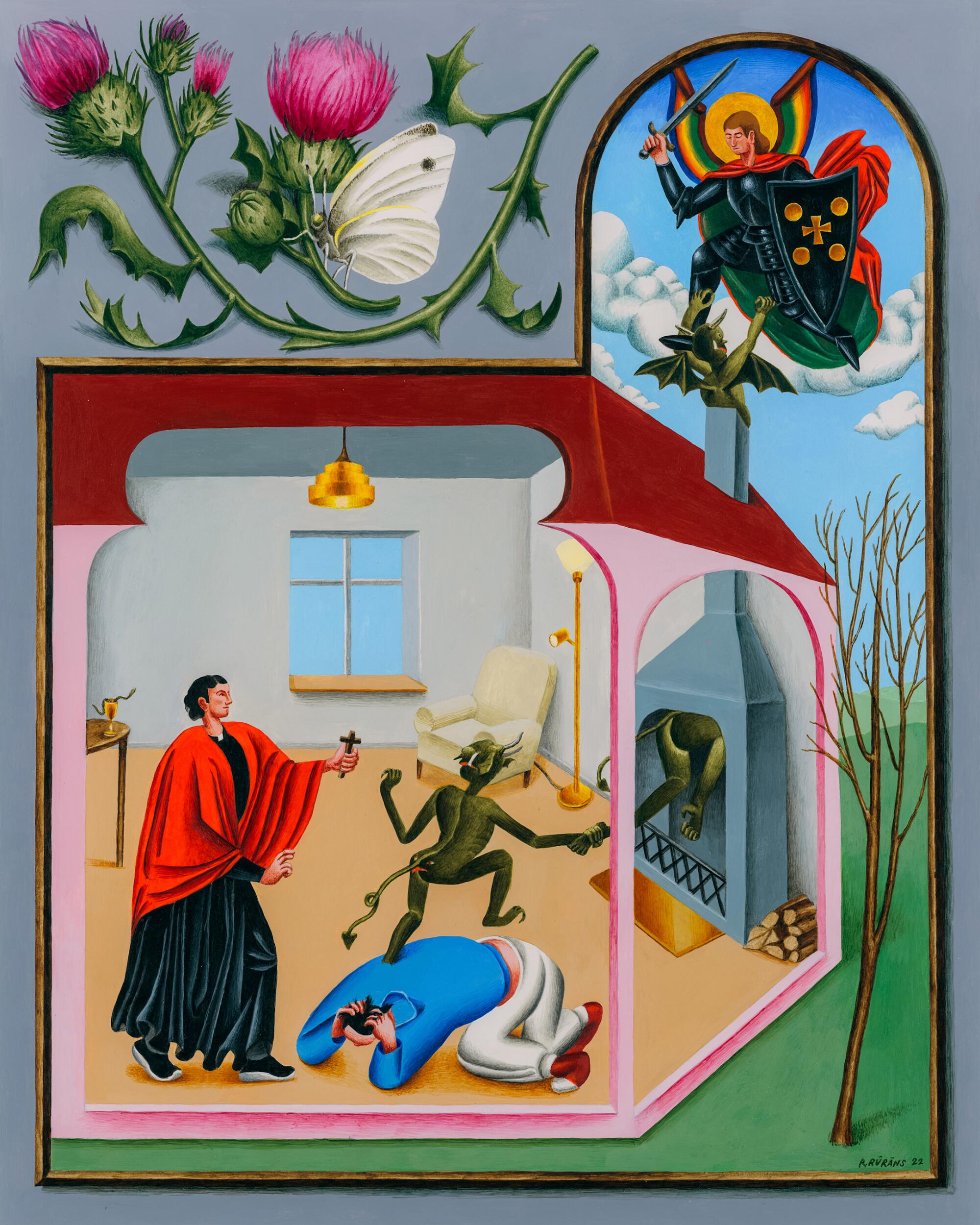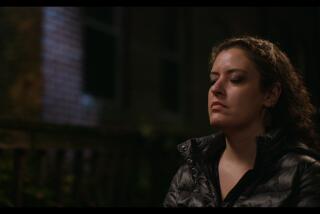
As a thriller writer, I’m never certain where my research will take me, and often it takes me to very dark places. Demonic possession, for example.
“Possession” is now recognized in the American Psychiatric Assn.’s Diagnostic and Statistical Manual of Mental Disorders.
I have on my desk a letter from an exorcism team at a Southern California Catholic church telling me that “more people of good will have been experiencing various forms of spiritual attack since the onset of the pandemic” and that “the team is overwhelmed with its current workload.”
M. Scott Peck, the well-known psychiatrist who wrote about spiritual development in “The Road Less Traveled,” treated two patients he diagnosed as possessed and helped do exorcisms on both of them. He admitted he went from being a complete nonbeliever to a complete believer in the demonic ability to possess.
A recent Vatican-sponsored exorcism conference in Rome was attended by 250 priests from 51 countries. The tools of the trade in Catholicism are simple: a purple stole, a crucifix, holy water, a copy of “Exorcisms and Related Supplications.” Most Catholic exorcisms these days take place in a church office, with the possessed sitting in a chair.
Modern medical practice agrees that physical well-being and mental well-being are intertwined with spirituality. There are countless examples of this: Somatization disorder is defined as recurrent and multiple medical symptoms generally with no discernable organic cause. The symptoms are physical, mental and spiritual — a fear/survival response to emotion and physiology. Integrative medicine is the combination of treating mind, body and spirit. An alternative to traditional psychiatry, psychoneurology, “bridges ancient wisdom with leading edge technology to pioneer an entirely new paradigm in healing and wellness,” according to its accreditation board.
Exorcism flows quite naturally into such practices. It’s no wonder a recent poll shows that nearly half of the people in the U.S believe demons exist.
The 1973 movie “The Exorcist,” based on William Peter Blatty’s novel, fictionalized the real-life exorcisms of a 14-year-old boy. The final exorcism was done by Jesuit priests in 1949, at Alexian Brothers Hospital in St. Louis. Afterward, the room was sealed up. The boy got married, had a family and a long career. He died in 2020, having never spoken publicly about what happened.
Exorcisms were secretive then. Hidden. Denied. But today, exorcism is mainstream. Catholic exorcist Father Vincent Lampert, an Indiana priest, is on YouTube. So is Msgr. (and licensed psychologist) Stephen J. Rossetti (“Diary of an American Exorcist”), among others. Some priests conduct exorcisms by cellphone. The archdiocese of Washington’s website includes a “Request an Exorcism” form.
In January of 2014, the Indianapolis Star broke the story of mysterious events that played out in 2011, in Gary, Ind. Latoya Ammons; her mother, Rosa Campbell; her daughter and two sons moved into a rental house and within a month trouble started — swarms of black flies, a shadowy man in the living room, footsteps climbing the stairs when no one was there.
Ammons’ 12-year-old daughter reported feeling held down and choked. She heard voices saying that her family would die. Ammons’ youngest son was propelled out of the bathroom as if he’d been thrown; he growled and thrashed.
Ammons could find no help. When one episode sent the family to the ER, the Department of Child Services was called. The children were found to be healthy; a hospital psychiatrist determined Ammons to be of “sound mind.” But a Department of Child Services caseworker and a hospital nurse reported that Ammons’ 9-year-son walked backward up the wall in a hospital exam room. The caseworker told the police that she believed there could be an “evil influence” affecting the family.
Ultimately, Latoya Ammons would lose custody of her children for six months. But once the Rev. Michael Maginot, a Catholic priest, performed three exorcisms for the family, the events stopped.
The exorcists are the skeptics now. Baffled and frustrated psychiatrists have turned to exorcists seeking help for patients whose torment does not follow the path of schizophrenia or delusional disassociation and does not respond to treatment.
Discernment, the exorcist’s art of getting to the source of the trouble, relies on science. Psychiatric evaluations. Physical evaluations. Exorcism triage. For many, a simpler ritual of deliverance, rather than a formal exorcism, is prescribed. For others, the prescription isn’t casting out demons but seeking psychiatric help.
The Catholic Church doesn’t release statistics about exorcisms, but according to a study of exorcism notes and data kept over 10 years by a priest in Italy, sociologists Giuseppe Giordan and Adam Possamai calculated that only 5% of those who sought help were found to be possessed. The average victim was male, highly educated, 40 to 50 years old and successful professionally and financially.
The symptoms of the possessed are always fairly consistent: Inordinate strength. Knowledge of hidden things. Speaking languages with no prior knowledge of them, sometimes backward. Foaming at the mouth. Embodying a malevolent entity that curses, makes threats and cannot tolerate the presence of sacred things, such as a crucifix. Suffering seizures, eyes that glowed yellow, a twisting distortion of limbs that seemed impossible. Testifying that something bad wanted to bloom inside them, to be them.
Giordan and Possamai believe we are in an “innovative era” that offers a “fresh look at a phenomenon that intertwines the magical, the religious, and the rational.” Joseph Laycock, an assistant professor of religious studies at Texas State University, who has taught courses on demonology agrees. He makes the point that an uptick in exorcism could be cyclical, due to social upheaval and uncertainty. A belief in demonic manipulation and exorcism, Laycock has written, offers a way of “interpreting contemporary political issues,” of “framing changing social mores.”
As we suffer through war, disease and division, the spiritual may help when rationality and science do not. I’ve listened to those who feel they have been under demonic attack; their explanation for why they sought out the age-old practice of exorcism is simple: They were desperate for a way to heal.
Lynn Hightower’s latest novel is “The Enlightenment Project,” in which exorcism plays a role.
More to Read
A cure for the common opinion
Get thought-provoking perspectives with our weekly newsletter.
You may occasionally receive promotional content from the Los Angeles Times.










